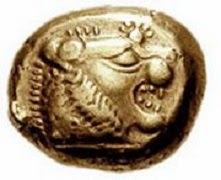Trading Proverb #5. Understanding equilibrium will make you rich.
Remember the day your teacher talked about the bell curve? Did you pay attention? It is the secret to wealth.
The data can be used to distribute samples in correlation and regression
analysis. In this analysis the data will produce a line of correlation
in which the majority of samples lie within control limits. These
control limits determine standard deviation and in most cases are
sufficient to 3 deviations.
In trading, you can create these control limits through an indicator
called a Bollinger band. Rather than being a straight line, the
Bollinger band uses a set moving average and then calculates the control
limits and automatically draws them on your chart.
That is your tool. But you still need to define equilibrium. Simply put,
this is a moving average that price will gravitate to and then push
away from. The push can be a bounce or a break through the moving
average. Once you figure out the moving average that best fits the data
for your currency, then use the indicator that I previously advised.
Remember? The indicator with the range you most prefer. Set the period
of that indicator to the equilibrium moving average. Now, every time the
price crosses the moving average on the chart, it will also cross the 0
line or 50 line of your indicator.
If you did a good job, there are still probably instances where the
indicator runs out of range and shows overbought or oversold. This is
where the moving average placed on the indicator comes into service.
Again this value should be a factor of the period setting of the
indicator. In essence it changes your indicator to a higher time frame
with each multiple. Adjust to find the spot when the indicator can cross
the moving average and give you a good probability that a change in
direction is really going to happen. Then make the Bollinger band for
that moving average and place it on the indicator. You will need to
remove the original moving average though, or the Bollinger band might
try to reflect the moving average rather than the indicator.
Now you can see when price has moved the farthest away from equilibrium
and is likely to return to it. This is some handy information.

No comments:
Post a Comment
Note: Only a member of this blog may post a comment.